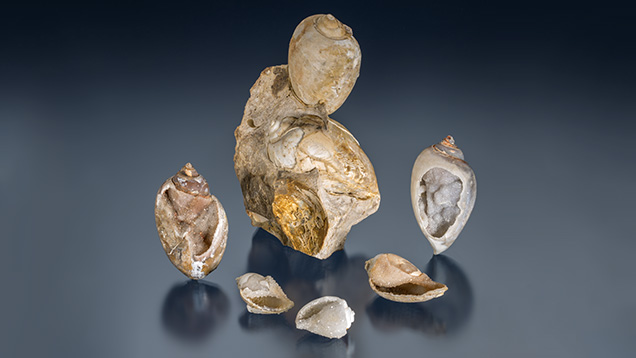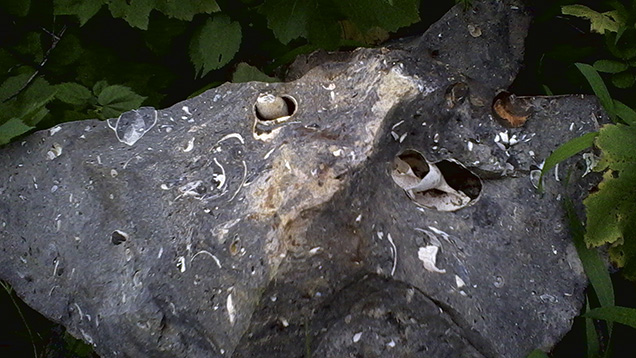Fossilized Drusy Shells – Tucson 2014


Figure 2. These fossilized drusy shells were found in rocks on a hill in central India. Photo courtesy of Tarun Adlakha.
According to Adlakha, these shells were called Dakshinavarti in ancient Sanskrit. The Hindu, Buddhist, and Tibetan cultures revere the left-hand coil gastropods for their metaphysical powers. Adlakha has trademarked this fossilized material as Spiralite Gemshells for use in jewelry. .jpg)


